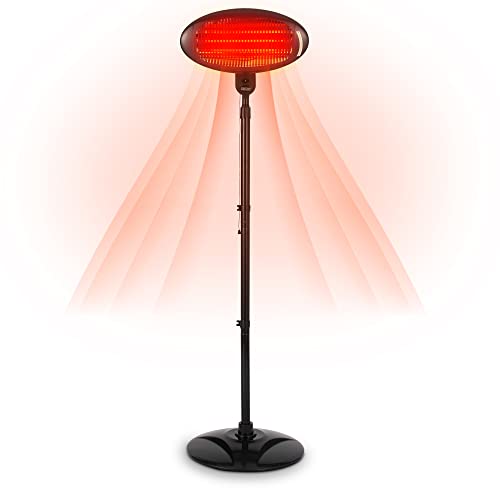Don't Forget Patio Heat Lamp Electric: 10 Reasons That You No Longer Need It

How to Choose a Patio Heat Lamp Electric
You have many options when you want to heat your patio. Electric heaters are more efficient than propane models which require fueling. fireplacesandstoves can be heated immediately by pressing a button or flicking the switch.
They also don't emit gasses that might cause health risks. Some have adjustable settings for heat for different distances.
Type of Heater
With the right patio heater, you will be able to relax in your outdoor living spaces into the night and across the seasons. Patio heaters are available in many different types including freestanding propane models, natural gas models as well as wall- or ceiling mounted electric radiant heaters. Your choice will depend on the size of the area, the power sources and personal preference.
Most patio heaters are powered by electricity or natural or liquid gas and emit heat in convection as well as radiant heating. The output of patio heaters is measured in watts which can be converted to British thermal units (BTUs), for comparison. Some models can be adjusted in heat settings to give you more flexibility.
A patio heat lamp incorporates an electric burner on a pole with a perforated metal screen that reflects the flames and radiates the heat downwards to warm people, furniture and other objects. Some come with a reflector atop the burner that can be silvered to reduce the amount of heat that is lost upwards.
The most common type of patio heater is a gas patio heater, is often seen in outdoor seating areas at restaurants and bars as they produce a lot of heat quickly and spread it evenly across all directions, making them ideal to heat tables. These heaters are portable and run on propane tanks, or they can be plumbed in to your natural gas line. The latter is more convenient and comes with lower initial costs, but requires fuel.
Gas patio heaters are becoming increasingly popular as more homes are equipped with natural gas lines. They are simple to install, however they require a gas line that is properly installed and functioning to ensure safety. There are portable natural gas heaters that come with extension hoses that help overcome this restriction however they can also be a risk of tripping and a fire risk when not in use.
Safety
Electric patio heaters can be used in enclosed areas since they allow heat to radiate upward and not outward. However, they're not intended for use under an open roof; the heater should be placed at least 18" from adjacent walls or 6" from the ceiling to avoid fire hazards.
The propane and gas patio heaters are generally only safe to install in enclosed areas that have a durable cover that is made for outdoor use. These covers are usually made of fire-retardant canvas and have a roof that can be closed. The safety concerns associated with these kinds of outdoor patio heaters are related to the flame and fumes they emit. They should be placed away from objects that can ignite, such as chairs and curtains.
Follow the instructions and safety measures of the manufacturer when installing a patio heater or patio heat lamp. Choose a model that has received UL and CSA safety certifications and be sure to read the user's manual thoroughly. Make sure that the heater is out of reach of children and pets. Some free-standing patio heaters, such as EUROM, have a built-in tipping safeguard that automatically shuts off the heater if it is tipped over.
If your patio heater is connected to a natural-gas line, you should be sure to check the condition of the line regularly and have it tested by a certified professional for leaks. If the line requires to be replaced, be sure to employ an authorized plumber. A professional can determine if the line is properly routed or if it should be routed through an underground pipe. A professional can also make sure that the patio heater is connected to an outlet that is GFCI-rated (ground fault circuit interruptioner) to protect against electric shocks and fires.
Installation

The height at which a patio heater is positioned determines the amount of heat it will radiate into the space. The heater should be placed away from surfaces such as plastic and wood that could deform. It is possible to mount the heater on a wall, structure or other surface using traditional mounting brackets. Certain models come with a soft start, which decreases the peak current to safeguard your circuits.
